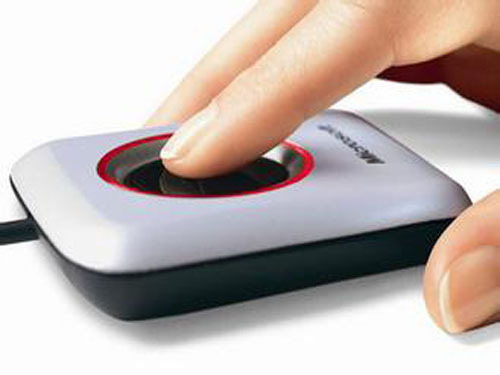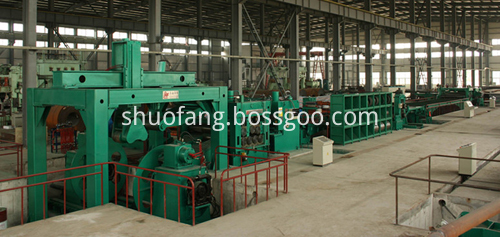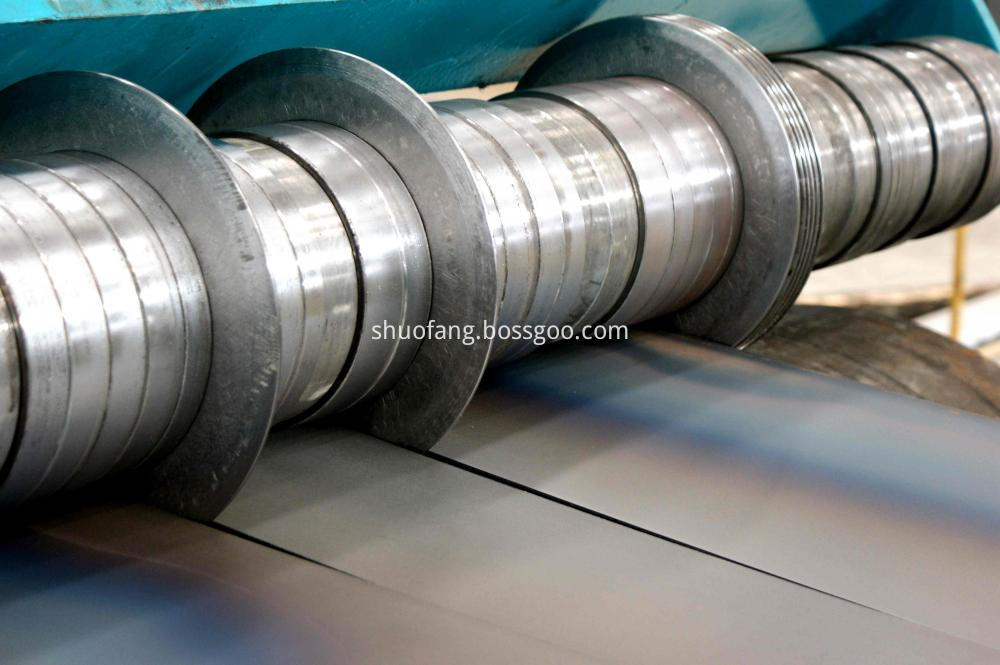
At present, the application of fingerprint recognition technology is the most widely used in biometrics technology, and the future direction of fingerprint identification applications that embodies the great potential of the market. Currently, it is mainly divided into four categories: First, confidential systems, which require a high level of security protection; Technology for the identification of large-scale crowds; third, citizen applications for urban public affairs; and fourth, authentication applications for real-life entry into the Internet virtual world.
First, the prospect of fingerprint recognition technology
I believe that with the improvement of fingerprint identification technology, it will be widely used in more fields such as ID cards, motor vehicles, and home furnishing. In the next five years, China will have nearly ten billion yuan in the market waiting for companies to open up. The huge market prospect of fingerprint identification technology will have a huge impact on the international and domestic security industry. Smaller companies will face the ruthless competition of the newly entered large companies in traditional industries. In front of these giants, it is difficult for existing small and medium-sized companies to say that they have too much competitiveness, the industry is inevitably reshuffled, and mergers and withdrawals may become the helpless choice of most small and medium-sized companies. Eventually the company or large capital that may form the traditional industry will dominate the biometrics industry in a relatively short period of time. Of course, it does not rule out that some companies with core competencies will grow into new big companies in the form of "fast fish eat slow fish." "Big fish" and "fast fish" coexist, which is the inevitable result of every emerging market. The result of competition will form a new emerging industry.
In the 90s of last century, fingerprint identification technology began to rise in China. At that time, the application was limited to the criminal investigation field. It could increase the detection rate of public security agencies and save a lot of costs. However, fingerprint identification technology belongs to the use of "unknown subject" in criminal investigation. "Comparing" needs to be handled by a mainframe, and the cost of time and price is relatively large. Therefore, fingerprint identification is often used as an aid to criminal investigation. It is not widely used and has a very limited market share.
Through the continuous promotion and application of fingerprint recognition technology in the market, fingerprint recognition companies find that the real market for fingerprint identification technology should be the civilian market. Because the civilian fingerprint identification technology is "knowledgeable subject", "comparison" is faster and accurate. It is accompanied by more and more electronic devices, such as PCs, ATMs, and access control systems, which are entering our daily lives.
From a trend point of view, the civilian fingerprinting technology will eventually replace the IDs and passwords that are defective in security and convenience to prevent unauthorized access. Because the fingerprint identification technology is more popular than the criminal investigation application, and the market capacity is larger, it has the basis for large-scale promotion. In western countries, fingerprint identification technology has entered the stage of large-scale civilian use. In 1990, Los Angeles used the world’s first relief fingerprint recognition system; the world’s first virtual bank, SFNB (Safety First Online Banking), also implemented a security-based security project based on fingerprint recognition technology. The security of the transaction.
Due to its mature technology and reduced cost, fingerprint recognition began to move toward civilian use. The domestic biometric identification will form a market of more than ten billion yuan in the future, among which the security industry is one of the most important fields of application, and there is a large market space.
Second, the four major types of fingerprint recognition technology
There are four types of fingerprint image acquisition technologies: optical scanning devices (such as a microprism matrix), temperature-sensitive inductive fingerprint sensors, semiconductor fingerprint sensors, and ultrasonic fingerprint scanning.
(I) Optical identification technology
Fingerprinting with optical technology is the oldest and most widely used technology. Place your finger on the optical lens. Under the illumination of the built-in light source, use a prism to project it on a charge-coupled device (CCD) to form a ridge (a line with a certain width and orientation in the fingerprint image). The lines (recesses between the lines) are white, digitized, multi-gray fingerprint images that can be processed by the fingerprinting device algorithm.
The optical fingerprint acquisition technology has obvious advantages: it has been tested for a long time, adapts to a certain degree of temperature variation, and can reach a higher resolution of 500 DPI, most of which is low in price. There are also obvious disadvantages: due to the requirement of a sufficiently long optical path, a sufficiently large size is required, and over-drying and excessively greasy fingers will also deteriorate the effect of the optical fingerprint product.
The limitations of optical fingerprint sensing are reflected in potential fingerprints (potential fingerprints are left after the finger is pressed on the platen), which not only reduces the quality of the fingerprint image, but also can cause the two fingerprints to overlap in severe cases. Obviously, it is difficult to satisfy. Practical application needs. In addition, the platen coating and the CCD array will wear out over time, which may result in a decrease in the quality of the acquired fingerprint image. However, there are disadvantages such as inability to perform live fingerprint identification and poor applicability to wet and dry fingers.
Optical fingerprinting systems can only scan the surface of the skin of a finger or scan to the layer of dead skin because light does not penetrate the surface of the skin (dead skin layer), but cannot penetrate deep into the dermis. In this case, the cleanness of the finger surface directly affects the recognition effect. If there is more dust on the user's finger, an identification error may occur. Also, if a fingerprint is used as a fingerprint model by a person, it may also pass through a recognition system, which is not very safe and stable for the user.
For example, in the prison escape case in Inner Mongolia that occurred at the end of last year, prisoners who escaped from prison were cut off the prisoner’s finger and verified the optical fingerprinting machine to open the prison’s access control. There are recent major media reports, in Taobao, about 100 yuan can be customized to buy silicone fingerprints, you can easily verify through the optical fingerprint machine, office workers specifically use it on behalf of fingerprint attendance.
In addition, the presence of a prism in an optical sensor has a large size, which is generally several times or even 10 times that of a semiconductor, and thus limits its application to small-sized devices. There are no volume restrictions on large equipment such as attendance machines and access control systems, but the use of U disk, mobile hard disk, and handheld devices has become the biggest obstacle. Low cost has always been considered as the greatest advantage of optical sensors, but due to the consistency of its manufacturing process is difficult to guarantee, with the large-scale development of semiconductor sensors represented by capacitive sensors, the cost advantages of optical sensors are no longer evident. Although most companies still use optical sensors, their development trend is novel, high-quality semiconductor capacitive fingerprint sensors.
(B) Temperature Differential Sensing Recognition Technology
The temperature-sensitive inductive recognition technology is based on the principle of temperature sensing. Each pixel is equivalent to a miniaturized charge sensor, which is used to sense the temperature difference between a finger and a chip image area to generate a representative image information. The electrical signal.
Its advantage is that the fingerprint image can be acquired within 0.1s, and the sensor has the smallest volume and area. This is commonly referred to as a sliding fingerprint reader. Disadvantages are: subject to temperature limitations, over time, fingers and chips are at the same temperature.
(III) Semiconductor Silicon Technology (Capacitive Technology)
In the late 1990s, the technology based on the semiconductor silicon capacitive effect tended to mature. The silicon sensor becomes one plate of the capacitor, and the finger is the other plate. The difference in capacitance between the ridges and valleys of the handprint line and the smooth silicon sensor forms an 8-bit grayscale image. The capacitive sensor emits an electronic signal that passes through the surface of the finger and the layer of dead skin, reaching directly to the living body layer (dermis layer) of the skin of the finger and reading the fingerprint pattern directly. Due to the depth of the dermis, the sensor can capture more real data, is less susceptible to dust on the surface of the finger, improves the accuracy of identification, and effectively prevents identification errors.
Semiconductor fingerprint sensors include semiconductor pressure sensors, semiconductor temperature sensors, etc. Among them, the most widely used is a semiconductor capacitive fingerprint sensor.
The semiconductor capacitance sensor determines whether or not the position is what, according to the difference in the capacitance values ​​formed by the fingerprint's enthalpy and enthalpy and the semiconductor capacitive sensing particles. Its working process is pre-charged to a certain reference voltage by capacitive sensing particles on each pixel. When a finger touches the semiconductor capacitor fingerprint, since the 嵴 is a bump and the 峪 is a recess, depending on the relationship between the capacitance and the distance, different capacitance values ​​will be formed at the 嵴 and 峪 points. Then discharge is performed using the discharge current. Because 嵴 and 峪 correspond to different capacitance values, their discharge speed is also different. The squat pixel (high capacitance) discharges slowly, while the squat pixel (low capacitance) discharges faster. According to the difference in the discharge rate, the positions of the helium and the cesium can be detected, thereby forming the fingerprint image data.
Unlike optical devices, which use manual adjustment to improve image quality, capacitive sensors use automatic control techniques to adjust the sensitivity of the fingerprint image pixels and the local area of ​​the fingerprint, and combine feedback information to generate high-quality images in different environments. Due to the local adjustment capability, even poor contrast images (such as areas where the finger is pressed lightly) can be effectively detected and the sensitivity can be increased for these pixels at the moment of capturing to generate high quality fingerprint images.
The advantage of the semiconductor capacitor fingerprint sensor is that the image quality is good, generally no distortion, small size, and easy integration in various devices. The electronic signal emitted from the finger will pass through the surface of the finger and the layer of dead skin to reach the living layer (dermis layer) of the skin of the finger and directly read the fingerprint pattern, thereby greatly improving the safety of the system.
The most important advantage of semiconductor silicon sensing technology is its ability to achieve biometric fingerprinting. Better image quality than optical technology can also be achieved on smaller surfaces, achieving 200-300 line resolution on a 1cm x 1.5cm surface (smaller surfaces also result in lower cost and can be integrated into more Small device). Small size, low cost, high imaging accuracy, and low power consumption, it is very suitable for use in security and high-end consumer electronics products, known as the second generation of optical fingerprint identification technology.
The semiconductor capacitor fingerprint sensor has complicated manufacturing processes, and has many sensing units per unit area, including high-end, IC design technology, large-scale integrated circuit manufacturing technology, IC chip packaging technology, etc. Therefore, the capacitive fingerprint sensor is almost entirely developed by IC technology countries. Or areas, such as the United States, Europe, Taiwan and other places designed and manufactured. At present, only a few domestic manufacturers have the ability to produce semiconductor fingerprint sensors.
However, semiconductor silicon sensing technology also has the disadvantage that it will be disturbed by static electricity, but it can be solved by grounding during installation. In the past, the cost was relatively expensive. In recent years, the cost has dropped drastically. Compared with the cost of optical sensors, it is currently the most ideal fingerprint identification technology. Such as bank vaults and prisons and other high-risk security venues security access control system, the use of semiconductor silicon sensor technology fingerprint sensor for front-end living fingerprint identification, instead of the traditional password, credit card, optical fingerprint machine, so that the only true identity identification To ensure that nothing is lost.
(D) Ultrasound Technology
Ultrasonic fingerprinting is a new type of technology. The principle is to use ultrasonic waves to penetrate the material and produce echoes of different sizes depending on the material. When ultrasonic waves reach different material surfaces, they are absorbed, penetrated and reflected to different extents. ). Therefore, by using the difference in acoustic impedance between the skin and the air, it is possible to distinguish between the positions of the fingerprint and the ankle.
Ultrasonic technology uses an ultrasonic frequency of 1 x 104 Hz - 1 x 109 Hz, and the energy is controlled at a lossless level to the human body (the same intensity as medical diagnosis). Ultrasound technology products can achieve the best accuracy, it requires less cleanliness of the fingers and the plane, but its acquisition time will be significantly longer than the aforementioned two types of products, and the price is expensive, and can not be done live fingerprint identification, so at present Use sparsely.
SF factory is focus on quality and company's image. We win market with good quality and service. The company has already passed International Quality Management System ISO9001:2008 certification for many years and also got the CE certificate, smoothly got the title of High and New Tech Enterprises.
And has more than ten own intellectual property rights and patent technology. We have own import and export right. Our products exported to Russia, South Asia, South east Asia, Middle East, South America, Africa, Australia, Eastern Europe etc.
CNC Professional machine for Steel coil.
Products Mainly including:
Steel coil recoiler.
Steel coil uncoiler;
Steel coil uncoiler and shearing machine
Steel coil uncoiler and slitting machine;
Plate Punching Machine;
Plate Drilling Mchine;
Shandong SF CNC Machinery Co., Ltd. is a grand manufacturer of Transmission tower machines in china. With 23 years` experience in this line, we are committed to producing only the finest products to our customers.
In 2019, we appointed Jinan JUFU International Co.,ltd to specially export our machines to abroad markets. And now we have a special engineer team for oversea market, and we are able to offer customer timely service.


Steel Punch Machine,Steel Plate Machine,Steel Coil Slitter Machine,Steel Plate Drilling Machine
Shandong EN FIN CNC Machinery Co., Ltd , https://www.shuofangcn.com